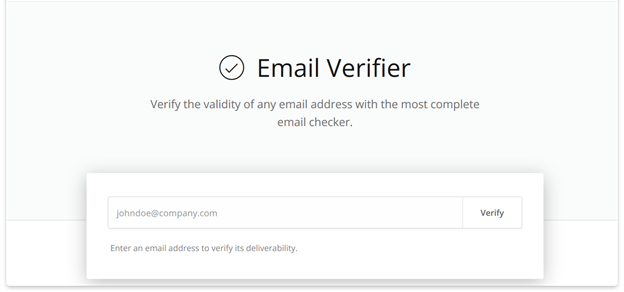3,131 total views, 6 views today

If someone is new and has signed up to your site, how do you know if his/her email address is correct or not? Here at SMTP Server, we’ve seen all kinds of problems with email addresses from simple typos to bad actors deliberately using spam trap addresses.
The best way is to send receivers a confirmation email with a verification link, then start engaging with them over time. Sometimes that isn’t an option, otherwise, you want to quickly clean up your contact list, and wish to seem at alternative verification methods. We’ll share a couple of methods of verifying email addresses, our recommendations, and what you ought to avoid.
Use of VRFY Command
You can use the “VRFY” command for verifying email addresses in the Simple Mail Transfer Protocol (SMTP). If you go through a Transmission Control Protocol (TCP) connection to an SMTP server, the “VRFY” command is meant to authenticate the address.
SMTP server’s Email Validation API
When you send an email through the SMTP server, you’ll validate email addresses in your contact list by using our Email Validation API. By using machine learning, the email validation API identifies common misspellings, inactive email addresses, and shared email addresses (like [email protected]).
This is often a secure and effective method of verifying email addresses because it complies with mailbox provider best practices, helping to stay in your position as an honest sender. It also improves delivery rates by sending to only validate contacts. However, it’ll be up to you to stay an eye fixed on open and click-through rates to make sure your contacts stay engaged.
Learn more about our Email Validation API to assist pack up your email list and improving your delivery rates.
Recommendations
If you’re trying to find how to verify the e-mail addresses in your contact list, here are our recommendations:
Do’s:
Send a confirmation email with a verification link. This not only confirms that the e-mail address is legitimate, but it also tells you whether or not the recipient is engaged together with your content.
For a fast and safe method of verifying email addresses, use the SMTP server’s Email Validation API.
Do Practice monitoring your audience engagement from time to time for getting better results and outcomes. This practice will help to eliminate inactive users from your contact list.
Don’ts:
Don’t try to use any broken method for verifying emails. It’s a poor sending practice. If you use this method too often then mailbox providers will think you’re a malicious sender.
Don’t use those servers that use the grey list. A greylist temporarily blocks the recipient if the sending server is unknown. So an easy verification test against a website protected by a grey list will always provide a negative result.
For best results, use a mixture of the e-mail Validation API and a confirmation email. This may allow you to see for typos and double-check that the recipient wants your content. This dynamic duo will assist you to achieve higher delivery and engagement rates.
Ready to check the e-mail Validation API? Try it out once you check in for a free trial.





